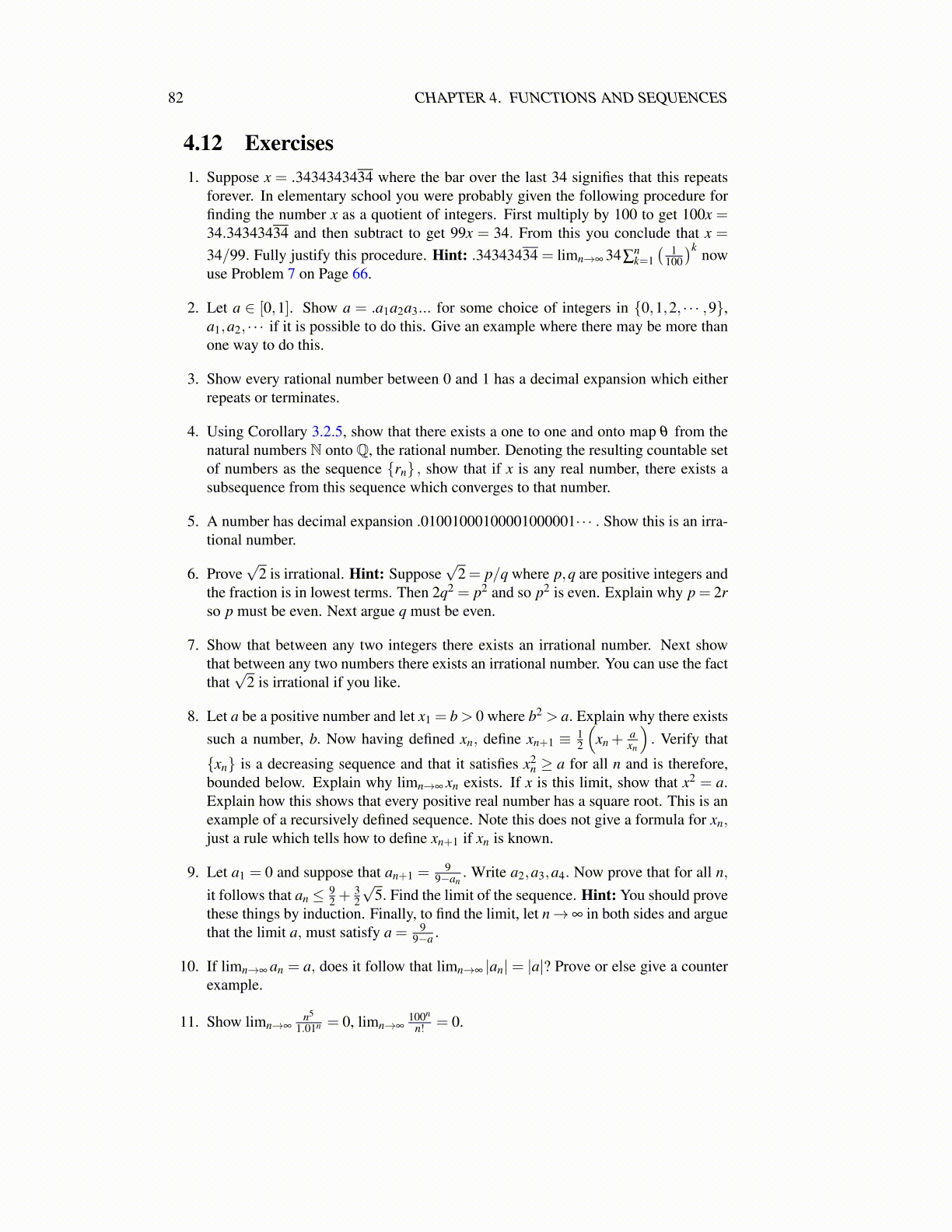
82 CHAPTER 4. FUNCTIONS AND SEQUENCES
21. Let λ = liminfn→∞ an. Show there exists a subsequence,{
ank
}and limk→∞ ank = λ .
Now consider the set, S of all points in [−∞,∞] such that for s ∈ S, some subse-quence of {an} converges to s. Show that S has a smallest point and this point isliminfn→∞ an. Formulate a similar conclusion to Problem 20 in terms of liminf anda sequence which is bounded below.
22. Prove that if an ≤ bn for all n sufficiently large that
lim infn→∞
an ≤ lim infn→∞
bn, lim supn→∞
an ≤ lim supn→∞
bn.
23. Prove that limsupn→∞ (−an) =− liminfn→∞ an.
24. Prove that if a≥ 0, then limsupn→∞ aan = a limsupn→∞ an while if a < 0,
lim supn→∞
aan = a lim infn→∞
an.
25. Prove that if limn→∞ bn = b, then limsupn→∞ (bn +an) = b+ limsupn→∞ an. Conjec-ture and prove a similar result for liminf .
26. Give conditions under which the following inequalities hold.
lim supn→∞
(an +bn) ≤ lim supn→∞
an + lim supn→∞
bn
lim infn→∞
(an +bn) ≥ lim infn→∞
an + lim infn→∞
bn.
Hint: You need to consider whether the right hand sides make sense. Thus you can’tconsider −∞+∞.
27. Give an example of a nested sequence of nonempty sets whose diameters convergeto 0 which have no point in their intersection.
28. Give an example of a nested sequence of nonempty sets Sn such that Sn⫌ Sn+1 whoseintersection has more than one point. Next give an example of a nested sequence ofnonempty sets Sn, Sn ⫌ Sn+1which has 2 points in their intersection.
29. For F = R or C, suppose F = ∪∞n=1Hn where each Hn is closed. Show that at least
one of these must have nonempty interior. That is, one of them contains an open ball.You can use Theorem 4.10.17 if you like.